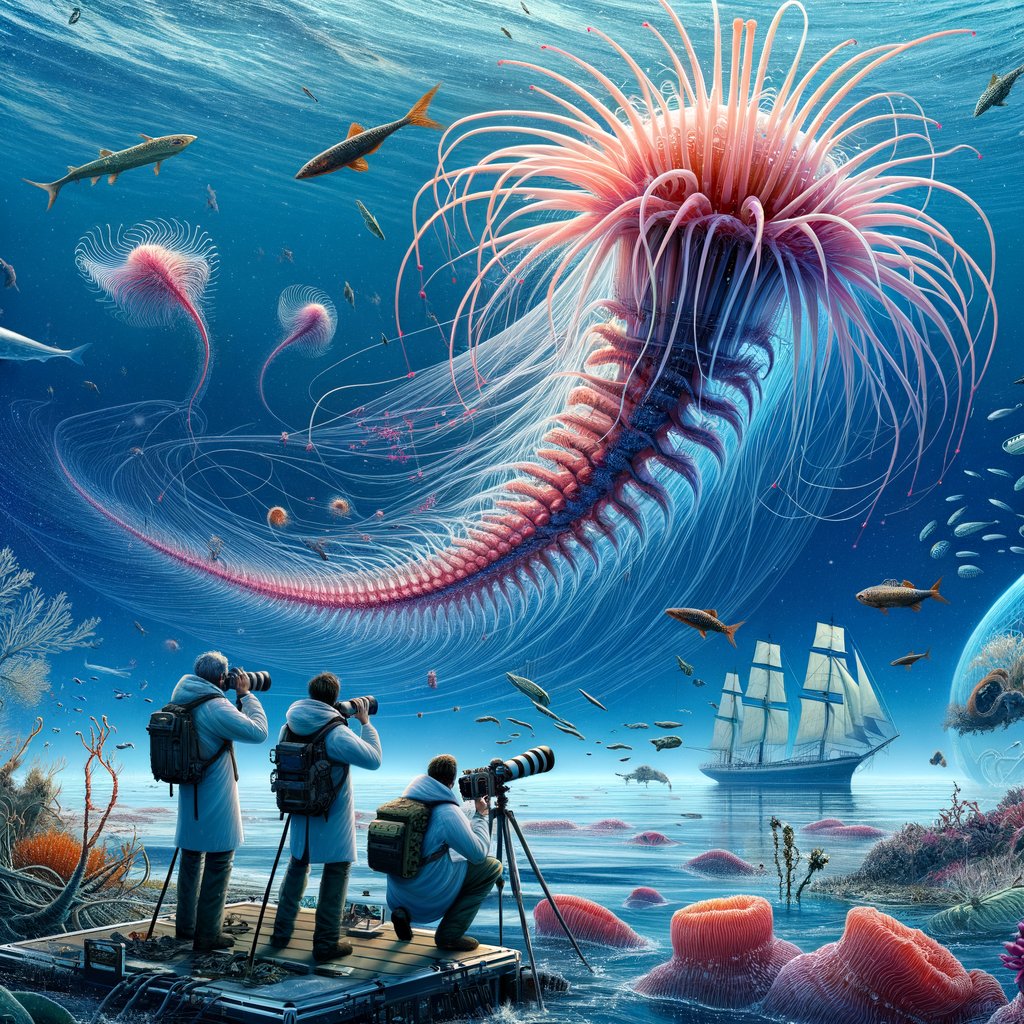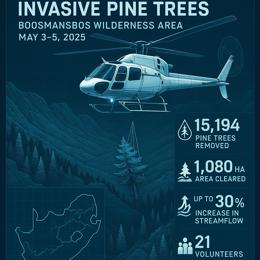Image created by AI
Breakthrough Discovery of Rare Siphonophore in South Africa’s False Bay Excites Marine Scientists
In a remarkable scientific achievement, researchers from Stellenbosch University have observed the rare siphonophore species, Rhizophysa eysenhardtii, in False Bay, a revelation that both extends the species’ known geographical boundary by 450 kilometers and deepens our understanding of marine biodiversity in South Africa.
The discovery, detailed in the prestigious journal African Invertebrates, sheds light on the mysterious life of Rhizophysa eysenhardtii, a species seldom observed within the expansive Great African Seaforest. This sighting was first made between June and September 2022 by a group of skilled freedivers, who captured the ethereal beauty of the siphonophore’s elongated, translucent body and striking pink tentacles on film.
Dr. Jannes Landschoff of Stellenbosch University’s Department of Botany and Zoology, expressed immense enthusiasm about the discovery. "The sight was unexpected and exhilarating, pushing the frontiers of our marine ecological knowledge," said Dr. Landschoff, who is also a Research Fellow affiliated with the Sea Change Project. The project is dedicated to exploring and preserving marine life.
Collaboratively led by Dr. Gill Mapstone from the Natural History Museum in London, the research highlights the unique aspects of the siphonophore’s structure and feeding habits. Notably, R. eysenhardtii was documented preying on unsuspecting fish larvae and chaetognaths, a type of predatory marine worm, illustrating its role in the food chain and ecosystem functionality. “The visual documentation of this species was mesmerizing and affirmed my passion for studying these unique marine colonies,” commented Dr. Mapstone.
Furthermore, this discovery is pivotal for the scientific community’s understanding of the distribution and behavior of marine species in the Benguela Ecosystem, where False Bay is located. The presence of R. eysenhardtii in these waters could be indicative of broader ecological shifts or adaptations driven by changes in ocean currents and environmental conditions.
This research is part of the ambitious 1001 Seaforest Species initiative, in partnership with the Save Our Seas Foundation, aiming to catalogue the biodiversity of this unique marine habitat. The initiative not only advances scientific knowledge but also supports conservation efforts by highlighting the ecological significance and fragility of the Great African Seaforest.
Dr. Landschoff underlined the critical need for ongoing marine conservation efforts. “The survival of rare species like R. eysenhardtii and the overall health of our oceans depend greatly on our actions towards protecting such irreplaceable ecosystems,” he remarked.
The finding of the Rhizophysa eysenhardtii in False Bay is a testament to the uncharted mysteries of the ocean, urging continued exploration and conservation to protect these hidden wonders of nature.










